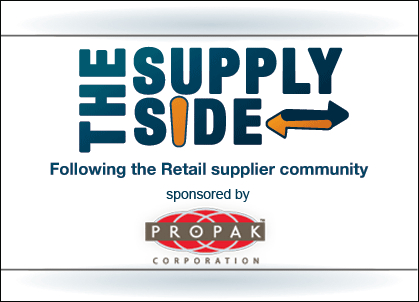Supply Side: Field Agent expert discusses problems with in-store product displays
by August 1, 2016 5:01 pm 271 views

Editor’s note: The Supply Side section of Talk Business & Politics focuses on the companies, organizations, issues and individuals engaged in providing products and services to retailers. The Supply Side is managed by Talk Business & Politics and sponsored by Propak Logistics.
––––––––––––––––––––
One of the biggest challenges smaller, or first-time suppliers to physical retail stores face is having a product display that doesn’t draw the attention of shoppers, much less convert them into buyers.
A recent blog post from retail expert Chris Medenwald of Fayetteville-based Field Agent details several reasons why suppliers rank in-store execution one of their biggest concerns.
Medenwald noted that while in-store displays may seem pretty predictable, retail is anything but, given there are so many hoops a product must travel through before it ever makes it to the shelf. A recent Retailing Today survey of suppliers found that 62% of consumer packaged goods (CPG) suppliers have experienced difficulty with ensuring merchandise initiatives are executed at the store level.
Medenwald said there are various reasons why products don’t sell in the store and he compiled his top reasons, some of which are shared below.
• Point-of-sale materials never arrived at the store.
He said some displays are doomed from the start as fixtures racks and signage for the in-store displays sometimes never make it into the store. That could be from a shipping error or some other communication issue on the supplier’s end of the chain.
• Display materials arrived but the product didn’t.
The blog post runs through several scary scenarios that could result in a supplier’s product not getting to the store, despite the fact that display modules are received. He said retailer’s inventory/execution management system could reduce or cancel your shipment due to high inventory levels already on hand. He adds that the stores also have the ability to “turn off” all non-everyday product shipments.
Ensuring that the right product gets to the right store in the ordered quantity is paramount to it being properly displayed.
A recent interview with a new Walmart supplier out of San Diego – Biomax Health Products – revealed that their anti-inflammatory cream Penetrex was being shipped to the stores in the proper quantities but there were a number of stores that had no product on their shelves, despite the store logs indicating some inventory.

“We are extremely happy to be in Walmart and see tons of opportunity with this retailer. I have never sold in brick and mortar and it’s a more complicated process than purely online but we are up to the challenge and look forward to hopefully getting into Sam’s Club and Neighborhood Markets once we get up to speed in the supercenters,” Farb said.
• Your display never made it to the store floor – it’s in the backroom.
Medenwald notes that the merchandising game includes some natural tension between corporate execution and store-level realities.
“Local managers, contending with everything from surplus inventory to finicky local shoppers, may stray from corporate plans – including those delineating the details of your shopper marketing campaigns,” he said.
It’s also important to note the Walmart gives its store managers a great deal of autonomy with regards to the displays they build and promote. Medenwald said some displays may become a low priority for managers at the store level who might want to push high inventory out the door, or they may be convinced that another display will result in more sales.
• Your display is “lost” in the store or in the wrong place.
It could be lost physically. By way of illustration, high inventory in or poor management of the backroom may block your display materials or product from employees’ view, Medenwald notes.
Rhonda Pieracci, founder of ARROWSigns, first got her cardboard signs into Walmart in 2013. The directional signs are sold in multiple retailers today, but Pieracci told Talk Business & Politics that in the beginning there were some challenges ensuring the products got set up in the correct part of the stores. She said because they are signs that point out directions to Yard Sales, and Celebrations some stores placed them in the hardware department, but the signs being made of durable, fluorescent cardboard cutouts were most often displayed near the other poster making items in the stationary and office supply section of the stores.
She said it took some work but getting the products displayed in the right departments. She said there was also a minor flaw in the packaging of the product that wasn’t discovered before it hit the floor. The signs come packed in four colors and are perforated so they can easily be separated. Early on, Pieracci said customers found the packages, and tore off the colors the wanted and then stuck the others back in the bin. The store would find partially opened packages and missing signs stuck back in the displays. Adding to the problem is that signs were displayed on a hanging end-cap in some stores.
Once the packaging flaw was fixed, she said the products were no longer tampered with by confused customers.
• Your display execution is a casualty of budget constraints.
Medenwald also notes that often companies will fork out the funds for in-store displays and other promotional materials, yet they don’t, won’t, or can’t budget for their effective execution. He urges suppliers to carefully consider shopper marketing campaigns, and then if they are done, proper monitoring and control is essential.
